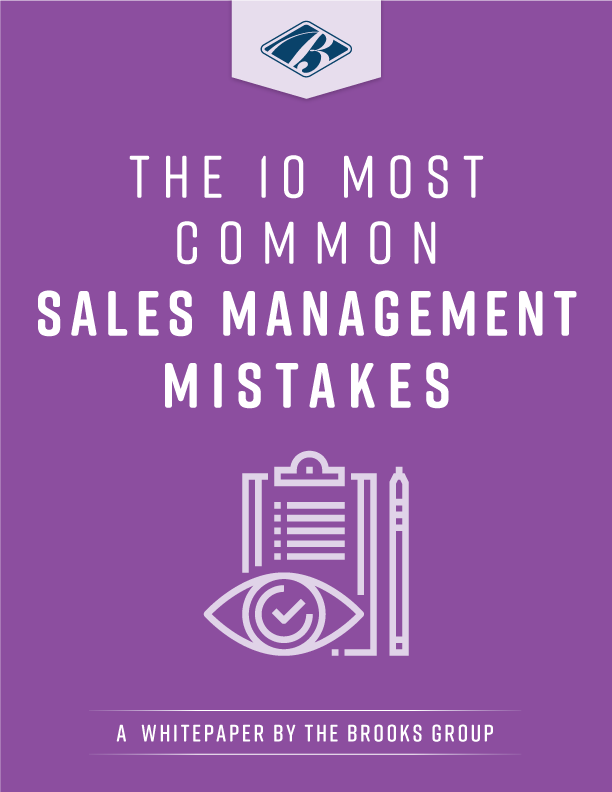Few jobs are more demanding than that of the sales manager. Meetings, more meetings, emails, coaching, and reporting are among the mountain of tasks you have to juggle on a daily basis.
With just a few tools and techniques for managing your time better, you can stress less, get more done, and spend time on the high-gain activities that move you and your team forward.
Start implementing these 10 time management techniques and you’ll quickly become more productive and achieve a healthy work-life balance.
1. Prioritize
As a sales leader, you will be asked to do a lot.
Don’t take on every little thing that gets added to your to-do list in the order you receive it. Prioritize mission-critical activities like coaching and performance reviews. Schedule time for them, and hold that time sacred.
Delay, remove, or delegate less-important tasks.
2. Maintain Boundaries
An “open door policy” is a good way to encourage open communication with your sales team, but it doesn’t mean you can’t create boundaries with your time and availability.
Designate time during your week to work uninterrupted on priority items. Then block off the time on your calendar and communicate to your people that this is your GSD (Getting Stuff Done) time—and to only interrupt if it’s crucial.
3. Block Your Time
Switching between tasks is not multi-tasking—it’s a way of wasting time and energy. It’s also a form of procrastination, if you’re being honest with yourself.
Plan your day by blocking out time to get specific tasks done. Make it a habit to dedicate your focus to one project at a time, and you’ll be surprised at how fast you begin crossing items off your task list.
Bonus: Instead of scheduling one-on-one meetings throughout the week, choose a day and block all similar activities together as much as possible.
4. Plan Each Day the Day Before
Effective time management begins with planning.
To make the most of the hours in each day, review your to-do list at the end of each day, and block time the next day for critical activities.
That way when you get into work each morning, you can begin your highest priority tasks immediately.
5. Stay Out of Your Inbox (Except at Designated Times)
Email can be the sales leader’s biggest efficiency killer.
Avoid getting caught in an endless cycle of answering emails by scheduling time to check your inbox, and then staying out of it the rest of the day.
This will prevent you from disrupting important activities (or activities with deadlines) to manage lower priorities.
6. Be Efficient with Meetings
Only schedule meetings that are 100% necessary, and only invite those who are needed.
Make sure every meeting has specific goals and an agenda, and always end the meeting on time.
At The Brooks Group, we use a version of the meeting system found in Gino Wickman’s book Traction to keep meetings on point and productive.
Learn how to create a productive sales meeting agenda in this post.
7. Coach, Don’t Sell
Many sales managers were highly skilled sales reps who were eventually promoted.
It can be tempting to want to jump in and rescue opportunities when your sales team is struggling, or to take over from your people when they’re working high-value deals.
This is counter-productive, as it takes up time you could spend coaching your team to be self-sufficient and effective on their own.
8. Coach Reps to Coach Themselves
There’s no question that coaching is one of the highest value activities you can engage in as a sales leader.
Train your salespeople to find energy-efficient solutions for themselves and you can free up time to spend coaching them on matters they can’t resolve on their own.
The 3-2-1 coaching method helps train your reps to identify their own solutions to problems—empowering them, and giving you more time to hit those important deadlines. To learn how to execute the 3-2-1 coaching method, check out this post.
9. Make Room for Chaos
The one unchanging rule of sales leadership is that things are always changing.
Make enough room in your schedule to account for chaos, and make it possible to jump back on track when things go awry.
Keep in mind your short and long-term goals, and don’t get too hung up when you’re thrown a curve-ball.
10. Make Time to Improve yourself
When you’re pressed for time, it’s tempting to drop self-improvement activities from your schedule.
But learning is one of the best time investments you can make and will lead to greater productivity in the long term.
Read best-selling books, subscribe to leadership blogs, attend sales leadership training, and take the time to study and implement the management tools that will improve your performance.
Conclusion
Implementing effective time management techniques into your day will free you to focus on high-priority items and improve overall productivity on your team.
Join us at an upcoming Sales Management Symposium to learn a proven system for efficiently leading and coaching your sales team to high performance.
Hear how the event gave one participant the system that helps him focus on “fire-proofing” instead of “firefighting.”
The 10 Most Common Sales Management Mistakes
Just like sales, sales management requires training. It’s an uphill battle to walk into such a complicated role and achieve success without any help. From the thousands of sales managers we’ve worked with, there are 10 avoidable mistakes that come up most often.





